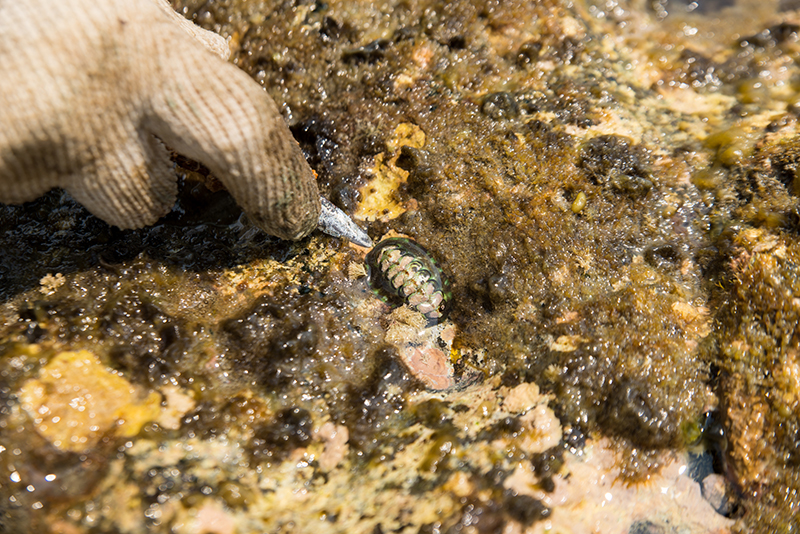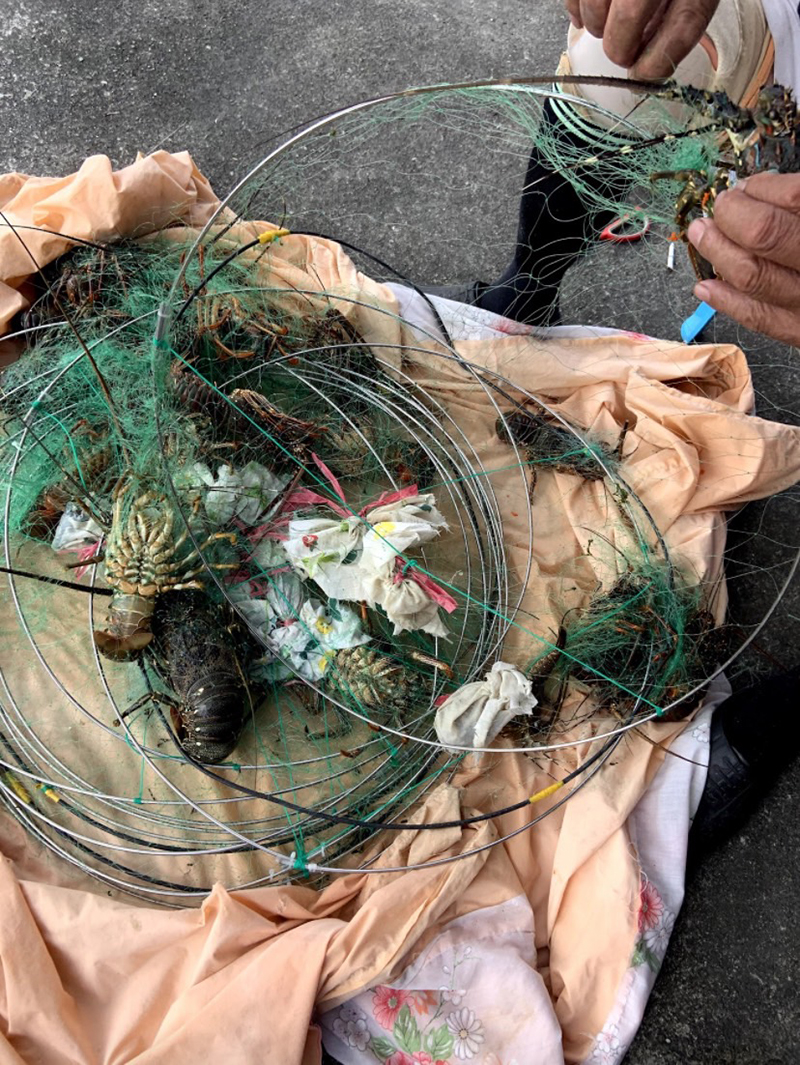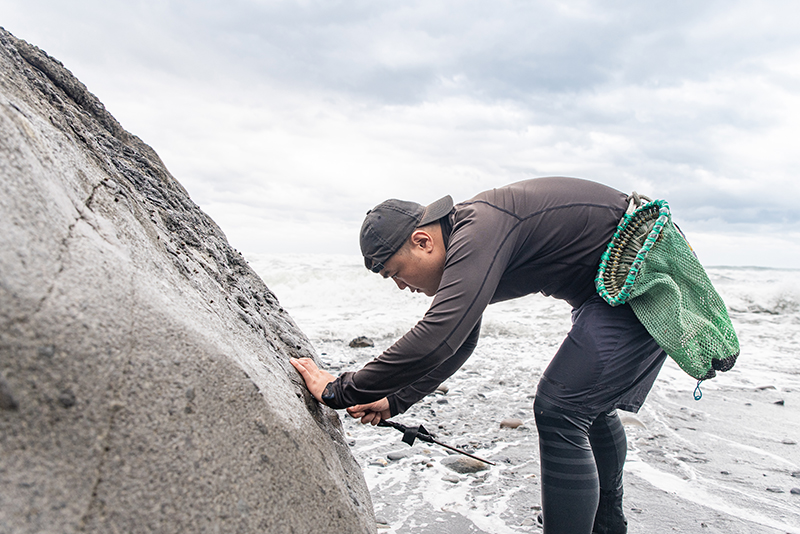
lulay inam (Lin Si-Long), a young man who could not speak his indigenous language and had only a vague impression of his identity, later went on to establish a Youth Club and reestablished his relationship with the ocean by actually diving into the waters. Through the process of learning his people’s language, lulay gradually learned more about himself and aspires to become the bridge between the older and younger generations. He hopes future generations can proudly identify themselves as “Kavalan”.


When the Kavalan people were working hard on their name rectification campaign in the 1990s, children born in their communities were influenced by mainstream society and still used Mandarin Chinese as their main language for communication. The people’s language became a language the younger generation could understand but did not know how to speak - a language that was familiar yet foreign.
For centuries, the Kavalan people have been overshadowed by the Pangcah culture. After the Kavalan successfully rectified their name in 2002, lulay inam, who had always attended Pangcah rituals, suddenly “became” Kavalan. Born in 1989, lulay hails from Hualian’s Kodic Community. However, back then he could barely speak his people’s language and was unsure of his own identity. Since he had so many questions about his identity and regretted that he could chat with family elders in their native tongue, 29-year-old lulay decided to put his job on hold and fully commit to the revitalization of the Kavalan language. He returned to his community to learn the language from the elders by following them like an apprentice.

Do You Know How to Say “High Tide” and “Low Tide” in the Kavalan Language?
When lulay returned to his community two years ago, he began his language learning journey with basic daily expressions, including basic vocabulary normally accumulated during childhood and basic general small talk such as “have you eaten?” or “what did you eat today?”. He also asked the elders about the local history and ritual to increase his understanding of his people’s culture. However, it wasn’t until the tubantu lazing held in April this year, when an elder asked him, “do you know how to say ‘high tide’ and ‘low tide’ in our language?” did lulay started to actually think about going into the ocean.
At that time, lulay’s language learning project was in its third year and nearing its end. Yet he could not answer the elder’s question. That’s when he realized that he knew nothing about words related to the sea. Later, the elder who spoke to lulay not only taught him the words but also told him high tides are the best time for diving and low tides are good windows to gather shellfish along the shore.
Motivated by this “ocean culture shock” incident and encouraged by community friends, lulay began to prepare himself for his ocean encounter, which began with diving lessons. lulay gradually trained himself to dive 15-16 meters deep (approximately the height of 5 to 6 stories) within 2 to 3 minutes, just like the village elders. He became familiar with the habits of lobsters and learned how to find and trap the critters. For his next lesson, lulay plans to learn how to use a fishing spear.

Village women gathering shellfish on the coastal reefs.
The Legend of the Sea Turtle Rescue
lulay once heard the village elders say that if you encounter a sea turtle, you must never try to trap it. According to local legends, a village member fell into the ocean and was rescued by a sea turtle who carried him to an island. Since there were no other human beings on this island, the villager observed and ate whatever seaweed and creatures the sea turtle ate and survived. Later, this individual brought the knowledge back to his village with him. Therefore the community believes that if someone eats sea turtle meat, misfortune will fall on their family.
If We Do Not Try to Make Some Changes,
We will Never Learn How to Fish
“Spirits by the sea, please pardon us for disturbing your peace. Later we will dive in these waters and collect some shellfish. Please let our trip be safe and smooth.”
Every invocation before going into the waters is a means of establishing a relationship with the sea, and the sea teaches the community members how to live in harmony with it. lulay recalled an experience he shared with his friends. “Many years ago during July or August, we discovered a lot of sea ??urchins. We gathered a whole bucket of it, there were probably a hundred urchins in there. But after we carried them back and opened the first one, there was no meat inside. The elders took one look at it and told us to dump the rest back to the shore because it was not their season and the rest would be empty as well.” Thinking back on this experience, lulay realized that it was as if the sea was telling them, “the ocean has its own rhythm and rules, you cannot take whatever and whenever you want.”
As lulay slowly reconnects the ocean, he notices the catch volume is decreasing annually, just as the elders have remarked; but a more significant challenge comes from the invisible boundary set between the community and ocean by the government. The county government has established the area between the Kodic Community and Stone Stairs Platform as a conservation area for lobsters. The official announcement reads “if necessary, the government will announce the period when lobster fishing is allowed”. However, since they are uncertain when the announcement will be made, the village elders cannot make any plans at all. The regulation also creates an additional obstacle for younger generations who wish to learn how to catch lobsters.
Furthermore, traditionally before the tubantu lazing, village members will go out and catch fly fish together; yet the county government requires every person going out to sea must have a Seaman Book. Some community members who could not obtain the document have clashed with the Coast Guard Administration before. “In the end, the young people who do not have their Seaman Books had to stay onshore. But if this does not change, the younger generation will never learn how to catch fish from the elders.” lulay said with a sigh. “In order to comply with national regulations, we can only take more required training classes and get our documents as soon as possible.”

Elders teaching lulay how to make the nets for lobster fishing.

Lobsters in the nets.
Ending the “Our Generation can Never Do Anything Right” Conundrum
Growing from a child who can only speak a few words in his indigenous tongue to a young adult that is fluent enough to serve as an interpreter, lulay reconstructed the relationship between young people and the village through the process of language learning. “When we were children, whenever there were rituals or ceremonies, we just fooled around and never got involved. So later when we return to the village as adults, we know nothing about butchering hogs and fish, or how to distribute the meat.” When the elders were assigning jobs before the rituals, lulay always had the feeling of “am I part of this community?” “I always felt that it seemed like my generation could never do anything right.” His thoughts actually reflect the situation of the younger generation living in an urbanized era.
But lulay did not give up. Five years ago, he and a couple of friends set up a Youth Club with young men between the ages of 20 and 40 as the main member group. They took the initiative and sought out the elders before the rituals to ask questions and actively participated in ritual preparations such as cutting down bamboo and building decorated archways. After the Youth Club was established, the elders knew they could assign work to the young people and allow them to learn through hands-on experience. “Later we realized that the elders were happy to teach us, they just didn’t know how to initiate it,” lulay said with a smile.
The Youth Club is just the first step. lulay and his friends also plan to restore the pre-tubantu lazing training tradition. Traditionally, before each tubantu lazing, all boys must go through a training session by the sea that lasts for three days and three nights. Much sea-related knowledge and fishing skills are passed down during the event and the fish caught during that period will become the source of funding for the following ritual. Through the reintroduction of this training tradition, lulay hopes to reestablish the relationship between young community members and the ocean.





